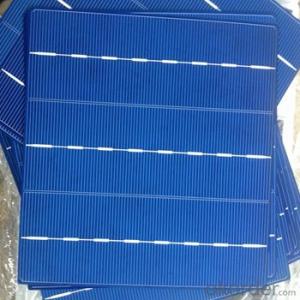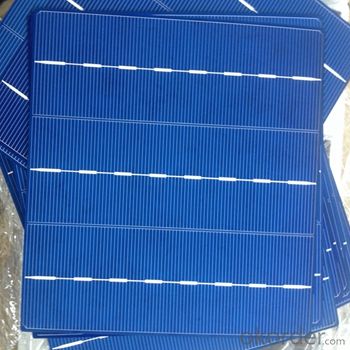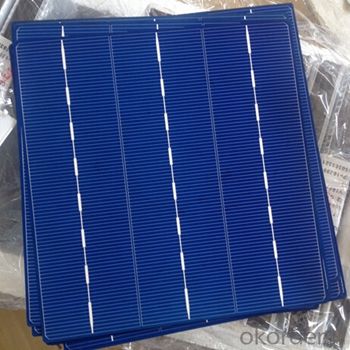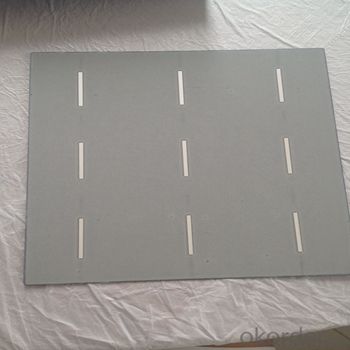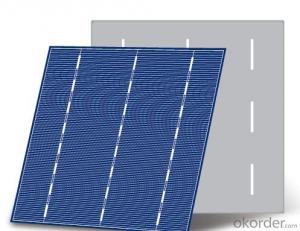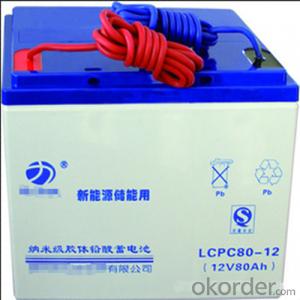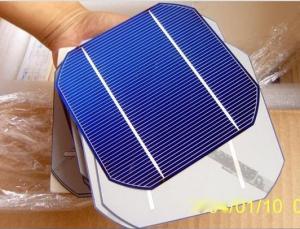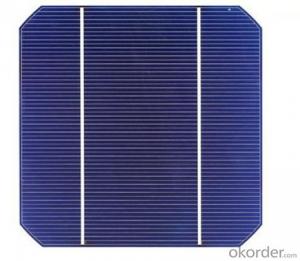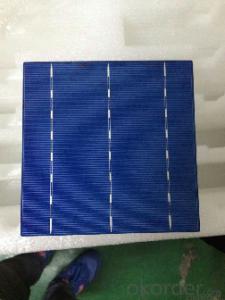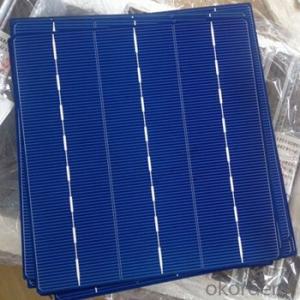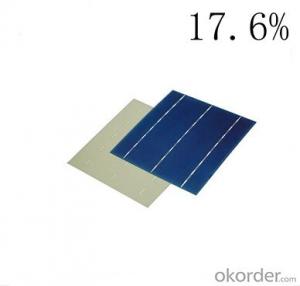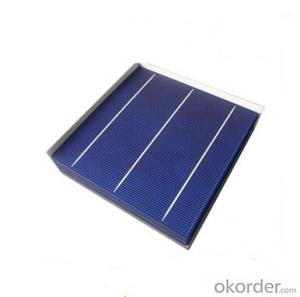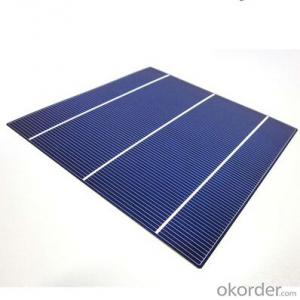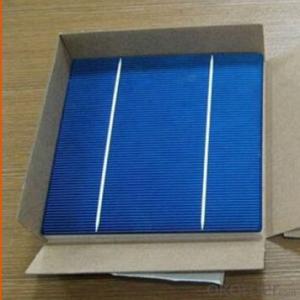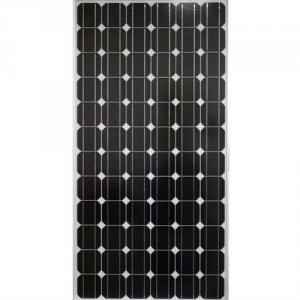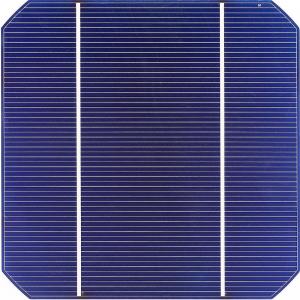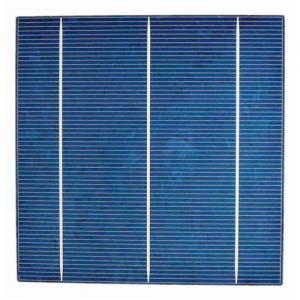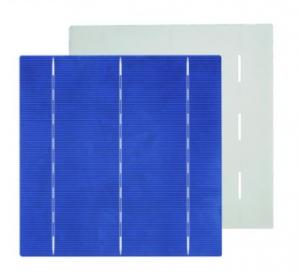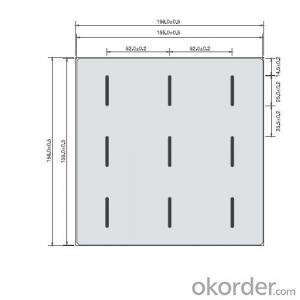Highest Efficiency Polycrystalline Solar Cells with Stable Performance
- Loading Port:
- Shanghai
- Payment Terms:
- TT or LC
- Min Order Qty:
- 5000 pc
- Supply Capability:
- 9000000 pc/month
OKorder Service Pledge
OKorder Financial Service
You Might Also Like
Polycrystalline Silicon Solar Cells:
Solar cells is made by solar wafer, it has three categories of solar cell right now, monocrystalline polycrystalline and thin film,These cells are entirely based around the concept of ap-n junction, which is the critical part of solar module, it is the part that can convert the light energy into electricity, the thickness is from 180um to 200um, with even busbars to conduct electricity, textured cell can decrease diffuse reflection; they are often electrically connected and encapsulated as a module. Photovoltaic modules often have a sheet of glass on the front (sun up) side, allowing light to pass while protecting semiconductor wafers from abrasion and impact due to wind-driven debris, rain, hail, etc. Solar cells are also usually connected in series in modules, creating an additive voltage. Connecting cells in parallel will yield a higher current;With high quality and stable quality. Our Cells can greatly improve the performance of Solar Modules.
Polycrystalline Silicon Solar Cells Advantage:
• High efficiency and stable performance in photovoltaic conversion.
• Advanced diffusion technique ensuring the homogeneity of energy conversion efficiency of the cell.
• Advanced PECVD film forming, providing a dark blue silicon nitride anti-reflection film of homogenous color and attractive appearance.
• High quality metal paste for back surface and electrode, ensuring good conductivity, high pulling strength and ease of soldering.
• High precision patterning using screen printing, ensuring accurate busbar location for ease with automatic soldering a laser cutting.
Specification:
Mechanical data and design |
Format - 156 mm × 156 mm ± 0.5 mm |
Thickness- - 200 μm ± 20 μm |
Front (-) - 1.4 mm bus bars (silver),blue anti-reflection coating (silicon nitride) |
Back (+) - 2 mm wide soldering pads (silver) back surface field (aluminium) |
Temperature Coefficient of Cells |
Voc. Temp .coef.%/K -0.364%/K |
Isc . Temp .coef.%/K +0.077%/K |
Pm. Temp. coef.%/K -0.368%/K |
Electrical Characteristic |
Efficiency (%) Pmpp (W) Umpp (V) Impp (A) Voc (V) Isc (A) |
18.00% 4.380 0.538 8.141 0.634 8.740 |
17.90% 4.356 0.538 8.097 0.634 8.725 |
17.80% 4.331 0.537 8.065 0.633 8.710 |
17.70% 4.307 0.536 8.035 0.632 8.695 |
17.60% 4.283 0.535 8.006 0.631 8.680 |
17.50% 4.258 0.534 7.974 0.630 8.665 |
17.40% 4.234 0.533 7.944 0.629 8.650 |
17.30% 4.210 0.532 7.914 0.628 8.635 |
17.20% 4.185 0.531 7.88 -- 0.627 -- 8.620 |
17.10% 4.161 0.530 7.851 0.626 8.605 |
17.00% 4.137 0.529 7.820 0.625 8.590 |
Intensity Dependence |
Intensity [W/m2] Isc× [mA] Voc× [mV] Pmpp |
1000 1.00 1.000 1.00 |
900 0.90 1.000 0.90 |
800 0.80 0.99 0.80 |
500 0.50 0.96 0.49 |
300 0.30 0.93 0.29 |
200 0.20 0.92 0.19 |
IV Curve

Solar Panel Images:
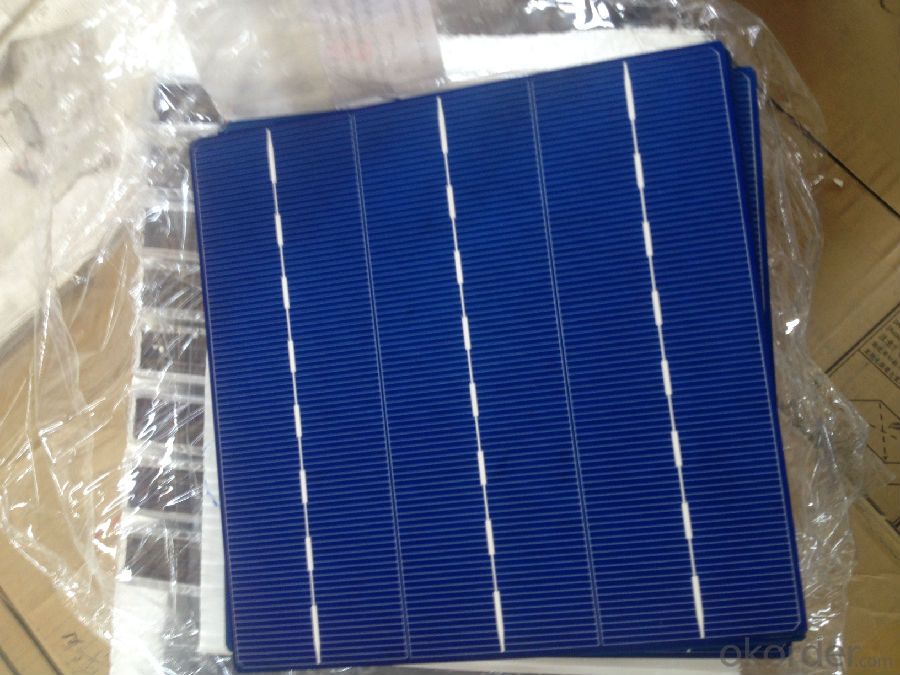
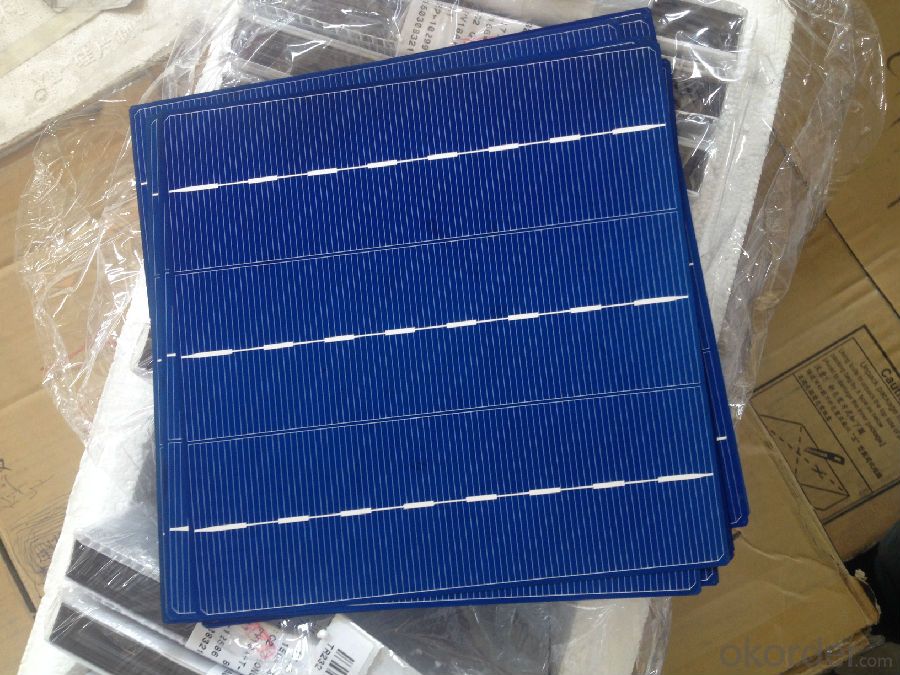
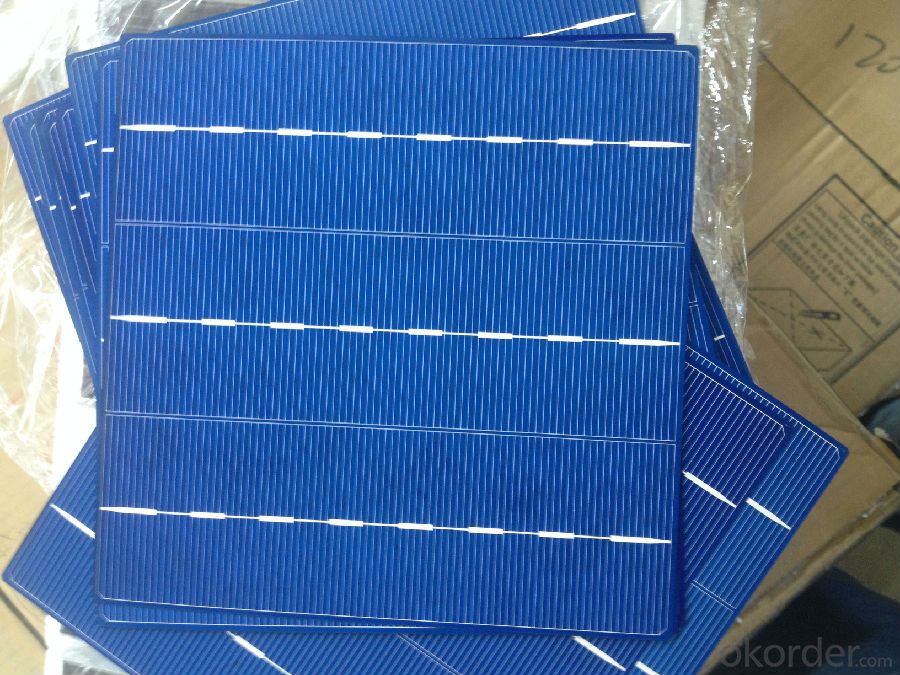
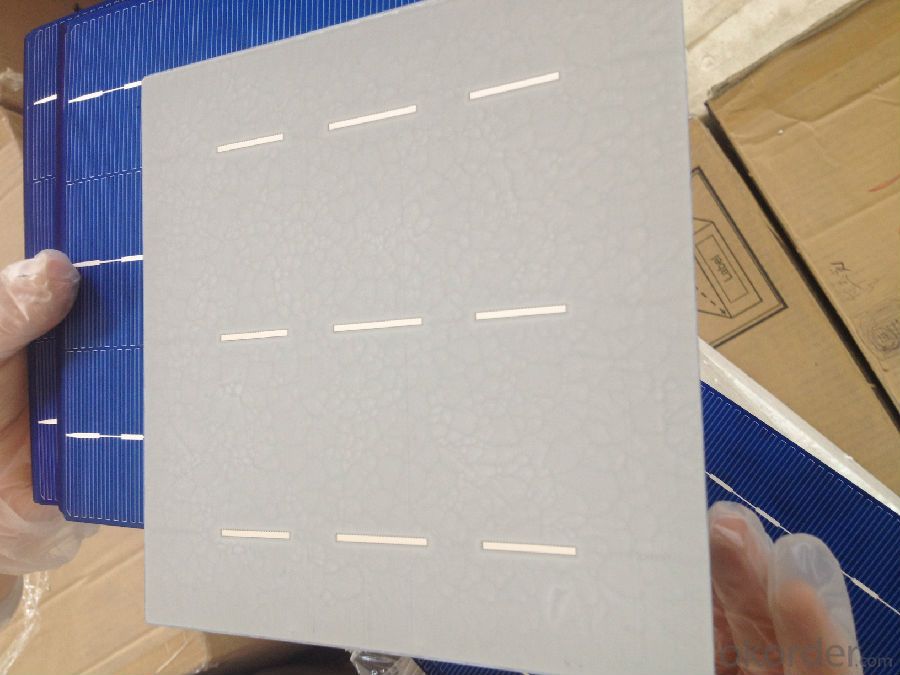
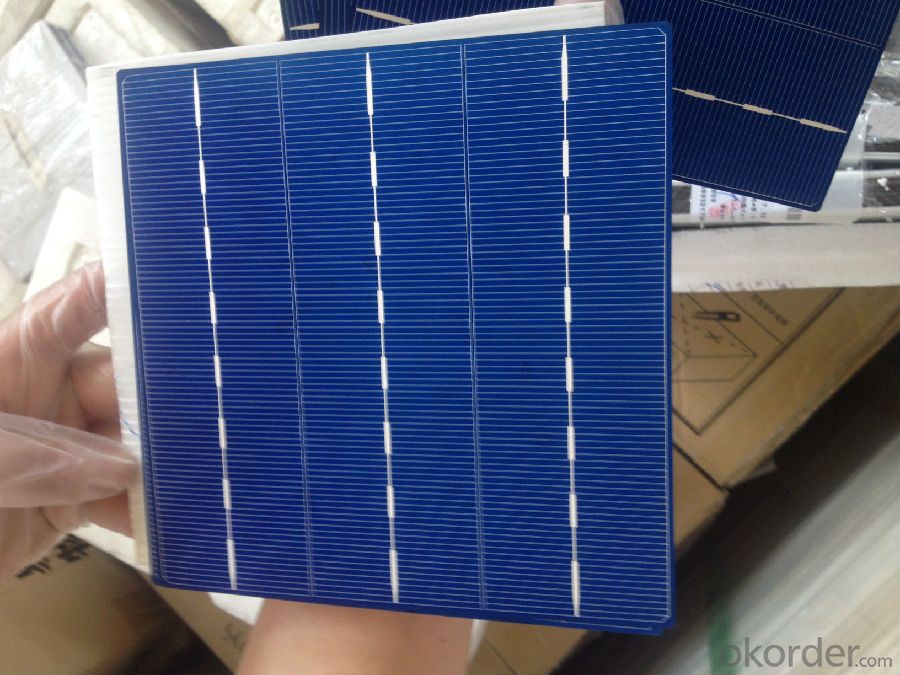
FAQ
We have organized several common questions for our clients,may help you sincerely:
①What price for each watt?
It depends on the efficiency of the solar cell, quantity, delivery date and payment terms.
②How long can we receive the product after purchase?
In the purchase of product within three working days, We will arrange the factory delivery as soon as possible. The pecific time of receiving is related to the state and position of customers.Commonly 7 to 10 working days can be served.
③Can you provide the peripheral products of the solar panels, such as the battery, controller, and inverter? If so, can you tell me how do they match each other?
Yes, we can, we have two companies for solar region, one is CNBM International, the other is CNBM engineering Co.
We can provide you not only the solar module but also the off grid solar system, we can also provide you service with on grid plant.
④What is your warranty of solar cell?
Our product can promise lower than 0.3% open box crack, we support claim after opening the box if it has crackm color difference or sth, the buyer should give pictures immediately, we can not accept the claim after the solar cell has assembled to solar panel.
• Timeliness of delivery
• ⑤How do you pack your products?
We have rich experience on how to pack the solar cell to make sure the safety on shipment, we could use wooden box or pallet as buyer's preference.
⑥ Can you do OEM for us?
Yes, we can.
New Achievement of Chinese solar cell research
Professor Xiong Yujie group from China Science and Technology University have designed a photoelectric conversion can be carried out and has a flexible solar cell mechanics in the near infrared region based on the widely used semiconductor silicon material, the use of hot electron injection method of metallic nanostructures. Most solar cells are for visible light absorption, accounting for 52% of the sunlight near-infrared light has not been used efficiently. To solve this problem, based on previous research group Xiong Yujie semiconductor - metal interface, creatively having a near-infrared light absorption properties of silver nano-chip with integrated silicon nanowires to build two different photovoltaic devices, the near infrared region photoelectric conversion characteristics are improved. In the near-infrared light, the silver nano-chip generated hot electrons can be injected directly into the silicon semiconductor, the band of the photoelectric conversion.
In addition, conventional solar cells must be processed into hard plate-like objects, which limit daily use. Lightweight and flexible devices, and can be folded, crimped, pasted on a surface, such as automotive glass, roof, clothes. Xiong Yujie group of commercial silicon nano process combined with silver nano-sheet near-infrared light absorption properties, to create a near-infrared solar cell having mechanical flexibility.
Experts said the work by nano-manufacturing and nano-synthesis two kinds of nano effective combination of technologies to achieve a broad spectrum of the light-absorbing composite structures design and the development of a simple and effective near-infrared flexible solar cell manufacturing method is expected to for the development of smart thermostat and wearable solar cells solar cells.
- Q: Can solar cells be used for outdoor lighting?
- Yes, solar cells can be used for outdoor lighting. Solar-powered lights utilize solar cells to convert sunlight into electricity which is stored in batteries during the day. This stored energy is then used to power the lights during the night, making them a sustainable and environmentally-friendly option for outdoor lighting.
- Q: What is the size and weight of a typical solar cell?
- The size and weight of a typical solar cell can vary depending on its application and design. However, a common size for residential solar panels is around 65 inches by 39 inches, with a weight of approximately 40 pounds.
- Q: Can solar cells be used in agriculture for irrigation?
- Yes, solar cells can be used in agriculture for irrigation. Solar-powered water pumps can be used to draw water from wells or other sources, providing a reliable and sustainable solution for irrigation. This helps farmers reduce their dependence on traditional energy sources and decrease operational costs, making solar cells a viable option for agricultural irrigation.
- Q: Can solar cells be used in art installations?
- Yes, solar cells can definitely be used in art installations. They can be integrated into various artistic mediums and designs to provide a sustainable and visually stunning source of energy. This allows artists to create interactive and eco-friendly installations that promote renewable energy and environmental consciousness.
- Q: Can solar cells generate electricity during a blackout?
- No, solar cells cannot generate electricity during a blackout because they require a connection to the electrical grid to function and supply power.
- Q: Can solar cells be used in residential communities?
- Yes, solar cells can be used in residential communities. In fact, they are increasingly being adopted by homeowners and communities as a sustainable and cost-effective energy source. Solar panels installed on rooftops or in shared spaces can generate electricity by converting sunlight into usable energy, helping to reduce reliance on traditional power grids and lowering electricity bills.
- Q: The history of solar cells
- lithium sulfur dioxide battery and lithium thionyl chloride battery is very characteristic. Their positive electrode active material is also the solvent of the electrolyte. This structure only occurs in the electrochemical system of non-aqueous solution. Therefore, the research of lithium batteries has also promoted the development of nonaqueous system electrochemical theory. In addition to the use of various non-aqueous solvents, people also carried out the polymer thin film battery research.
- Q: How to explain to students how the solar cells are made?
- The best way to explain that to students is to take them to a solar cells workstation if possibile.
- Q: Can solar cells be used for powering wildlife tracking devices?
- Yes, solar cells can be used for powering wildlife tracking devices. Solar cells convert sunlight into electrical energy, which can be stored in batteries and used to power various devices, including wildlife tracking devices. This allows for continuous and sustainable power supply, eliminating the need for frequent battery replacements or recharging.
- Q: What is the role of charge controllers in solar cell systems?
- The role of charge controllers in solar cell systems is to regulate the flow of electrical current between the solar panels and the batteries. They prevent overcharging of the batteries by monitoring the voltage and current levels, ensuring efficient charging and maximizing the lifespan of the batteries. Additionally, charge controllers protect the batteries from being drained excessively by disconnecting the load when the battery voltage drops to a certain level. Overall, charge controllers are crucial in maintaining the integrity and performance of solar cell systems.
Send your message to us
Highest Efficiency Polycrystalline Solar Cells with Stable Performance
- Loading Port:
- Shanghai
- Payment Terms:
- TT or LC
- Min Order Qty:
- 5000 pc
- Supply Capability:
- 9000000 pc/month
OKorder Service Pledge
OKorder Financial Service
Similar products
Hot products
Hot Searches
Related keywords
